
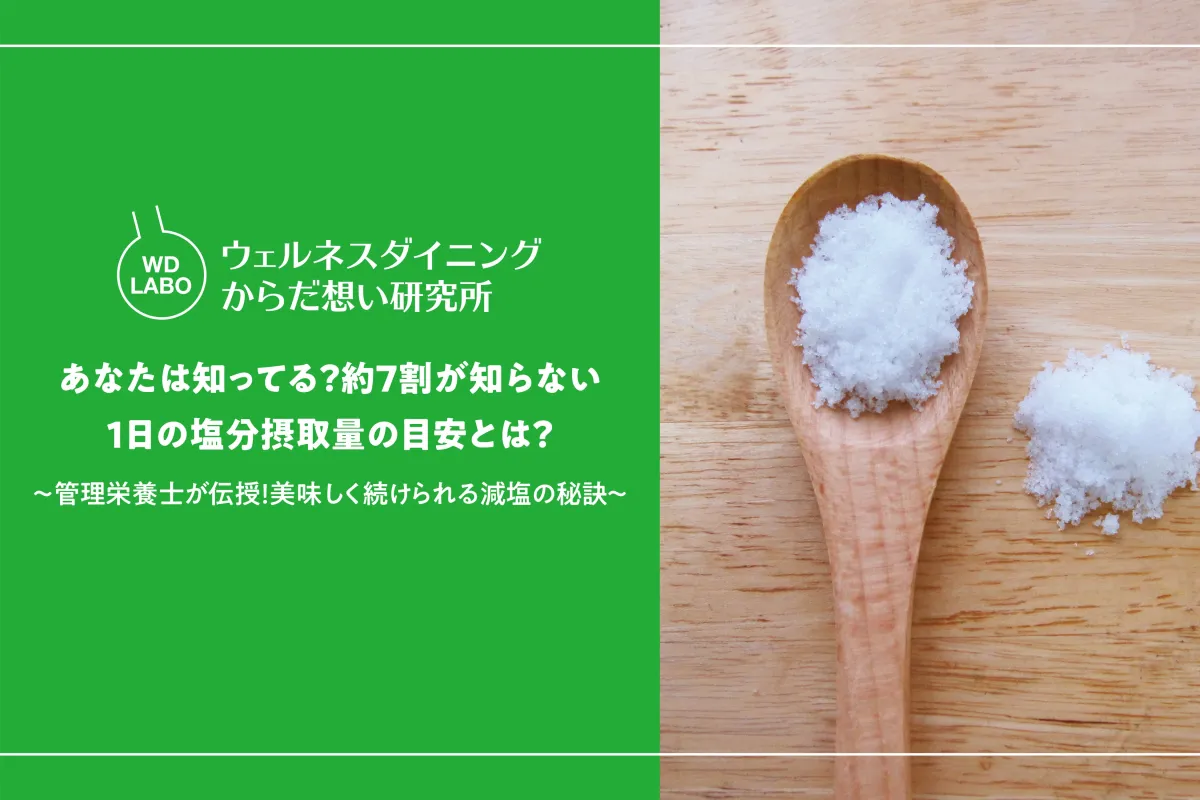
Understanding Daily Salt Intake and Overcoming Flavor Challenges for Better Health
Understanding Daily Salt Intake and Overcoming Flavor Challenges for Better Health
A recent survey conducted by Wellness Dining, headquartered in Sumida, Tokyo, explored the awareness and practices surrounding salt intake among individuals aged 20 to 60 across Japan. The findings reveal significant gaps in awareness, with a staggering 72.3% of participants unaware of the recommended daily salt intake.
Survey Highlights
The survey consisted of various questions aimed at understanding the public's knowledge and attitudes towards salt consumption:
- - 72.3% do not know the daily recommended salt intake.
- - 65.0% are unaware of how much salt they consume daily.
- - 51.0% pay attention to the amount of salt in their meals.
- - 50.7% are not actively reducing their salt intake.
- - 53.4% report that they find it challenging to reduce salt due to concerns about flavor.
These statistics indicate a glaring disconnect between awareness and actual habits regarding salt intake. Despite more than half of the respondents recognizing the importance of monitoring their salt consumption, many lack specific knowledge about how much is considered acceptable. Additionally, nearly 51% do not actively implement measures to reduce their salt intake, highlighting a need for better educational resources.
Participants' Insights into Salt Awareness
When asked if they are careful about salt in their daily meals, 51.0% emphasized their awareness. Interestingly, about 65% didn’t know their daily salt consumption level, indicating a level of concern that is not matched by their knowledge of personal intake levels. Furthermore, 72.3% of respondents were unaware of what constitutes a healthy daily salt intake, demonstrating a significant gap in understanding essential dietary guidelines.
The Challenge of Reducing Salt
Moreover, while many wish to lower their salt intake, 50.7% do not engage in any specific reduction strategies. The hurdle appears to be the perception that reducing salt leads to bland flavors, with 53.4% of participants citing tastelessness as a significant barrier to adopting a low-salt diet. This presents a dual challenge: how to educate individuals about healthy consumption while simultaneously providing practical solutions that allow for flavor retention.
In light of these responses, it’s evident that although awareness of health-related issues is growing, people still need guidance on both the knowledge and practical aspects of reducing salt.
Practical Tips for Reducing Salt from Nutritionists
Responding to the survey results, nutritionists at Wellness Dining have shared practical tips for reducing salt while maintaining flavor in meals:
1. Utilize Broth and Stock: Japanese dashi, rich in umami from kombu and katsuobushi, can provide depth of flavor without salt. For Western dishes, consider low-salt stocks to achieve similar results.
2. Spice It Up: Incorporate spices and aromatic vegetables like ginger, garlic, and scallions to enhance flavors in dishes without defaults to salt. This approach adds complexity to the flavor profile, making meals enjoyable.
3. Alter Cooking Methods: Choose cooking methods such as grilling and steaming that emphasize the inherent flavors of ingredients rather than relying heavily on seasonings. For example, grilling fish quickly at high heat can seal in juices and flavors, while steaming vegetables preserves their nutrients and natural taste.
Cooking Techniques to Try
- - Grilling: Grill fish and meat quickly to lock in flavor, and utilize grilling for vegetables to enhance their sweetness.
- - Steaming: Steam vegetables to retain their vitamins and original flavor, while steamed fish can be tender and full of delicate taste.
These tips from the Wellness Dining nutrition team encourage individuals to integrate flavorful practices into their cooking, paving the way for healthier, low-salt diets that do not sacrifice taste.
In conclusion, while awareness of health issues related to salt intake is becoming prevalent, there is still a critical need for measured education and practical guidance. By implementing effective cooking strategies and leveraging flavor-enhancing ingredients, individuals can work towards a healthier lifestyle while satisfying their taste buds. As wellness practices continue to evolve, supportive resources from companies like Wellness Dining play a crucial role in helping consumers navigate dietary changes successfully.


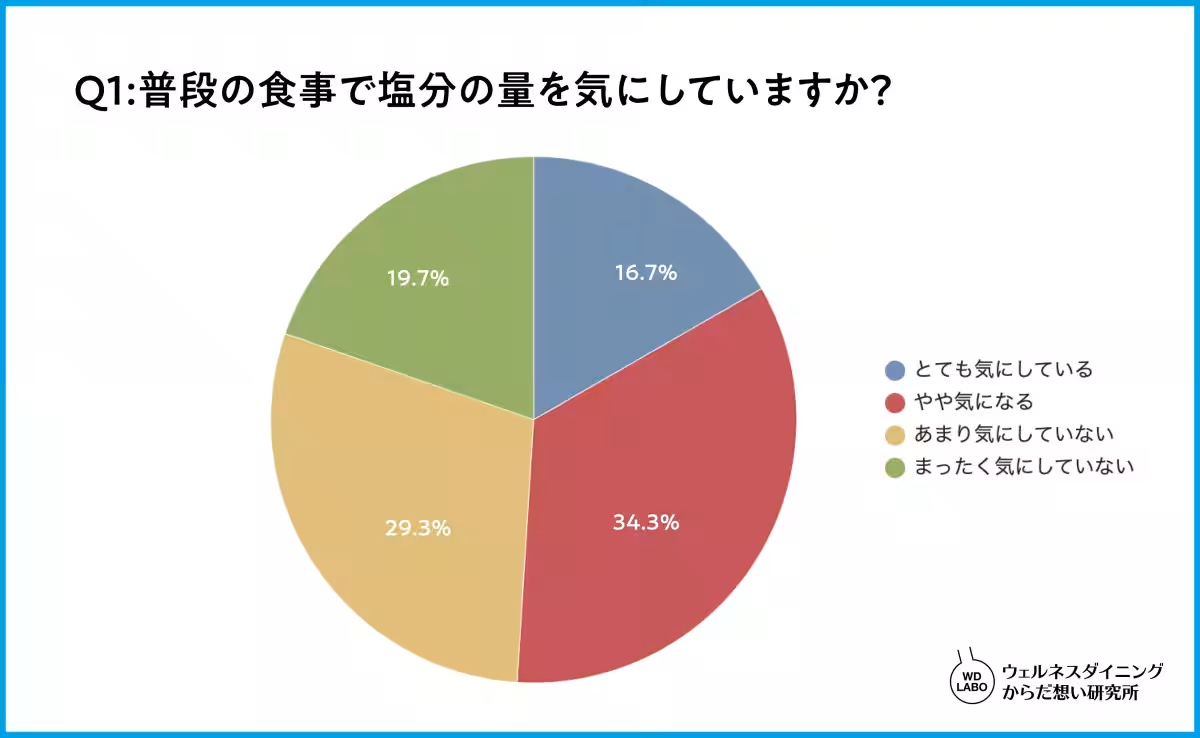
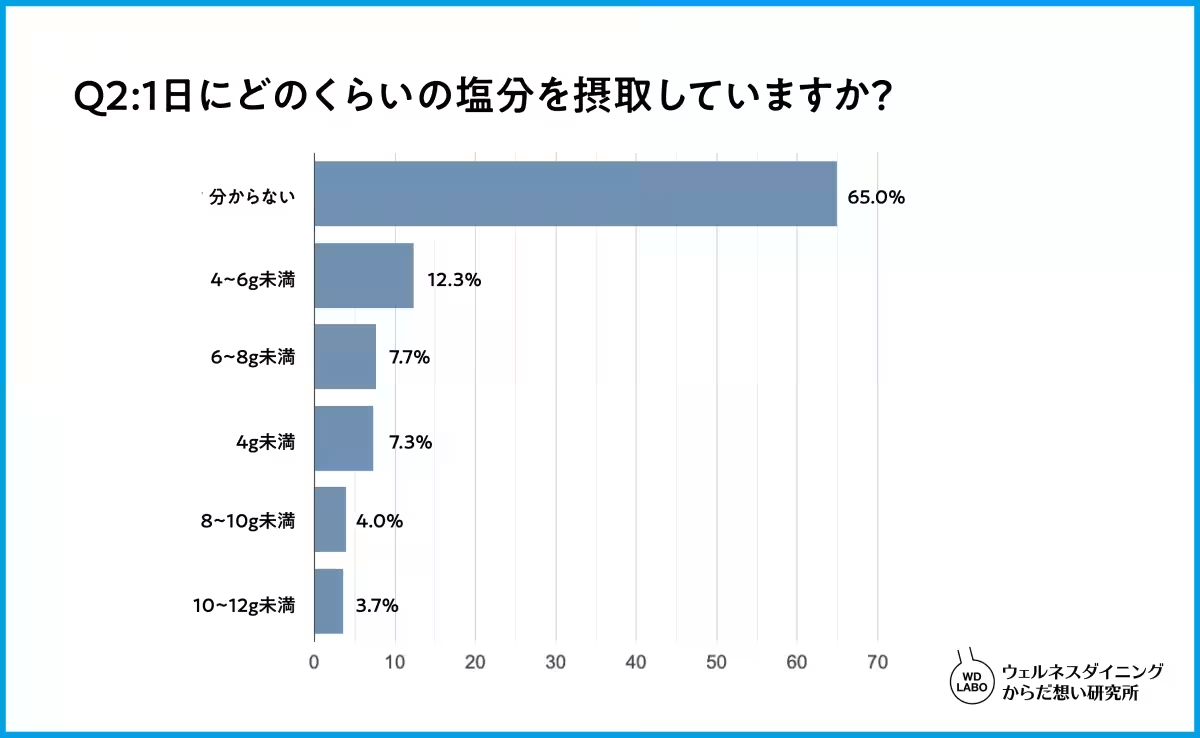
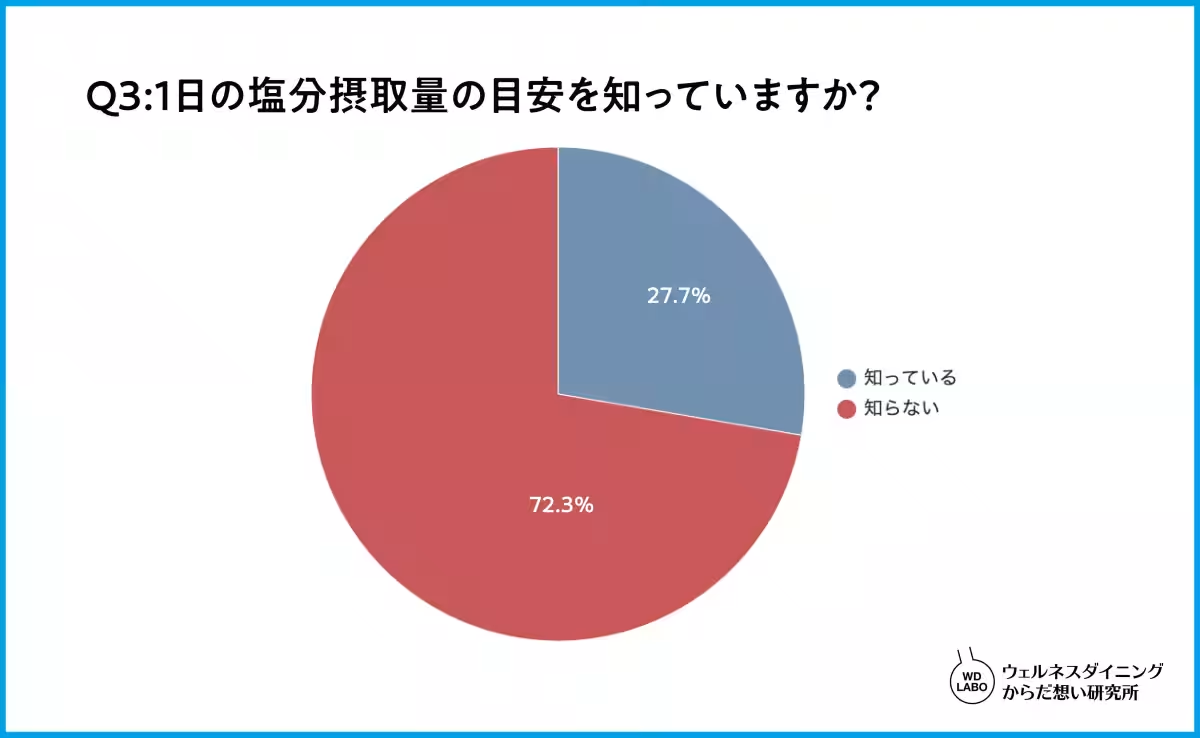
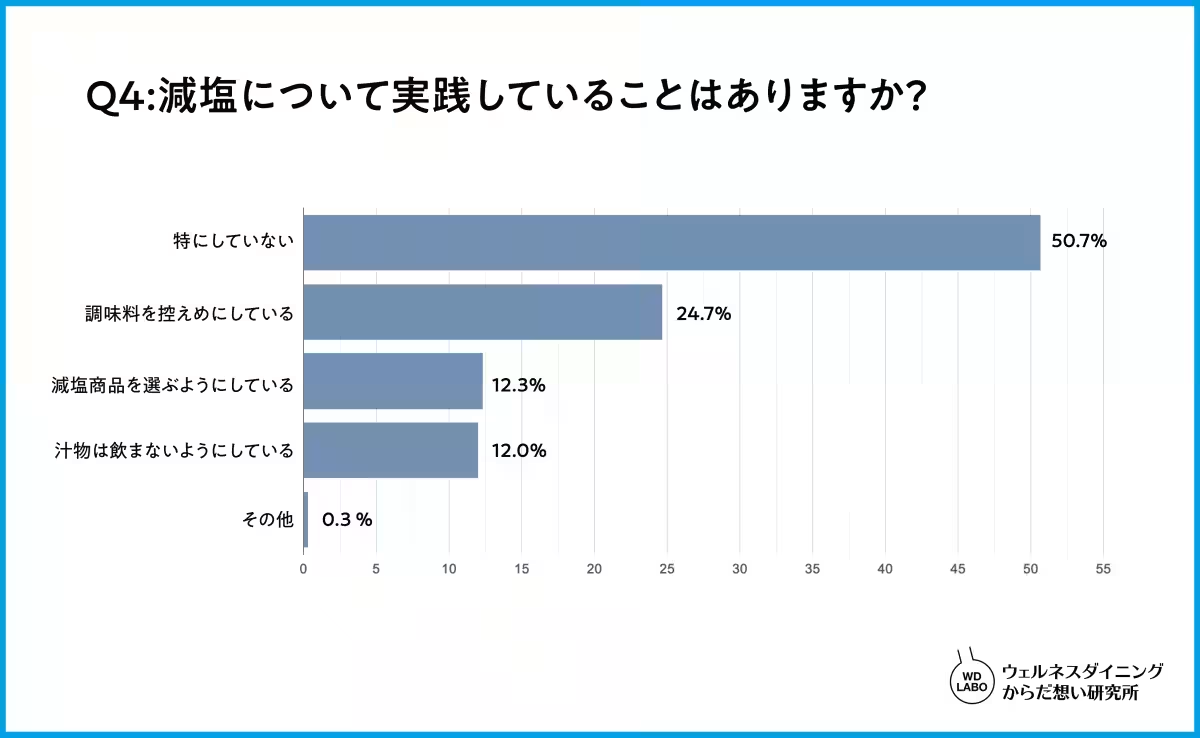
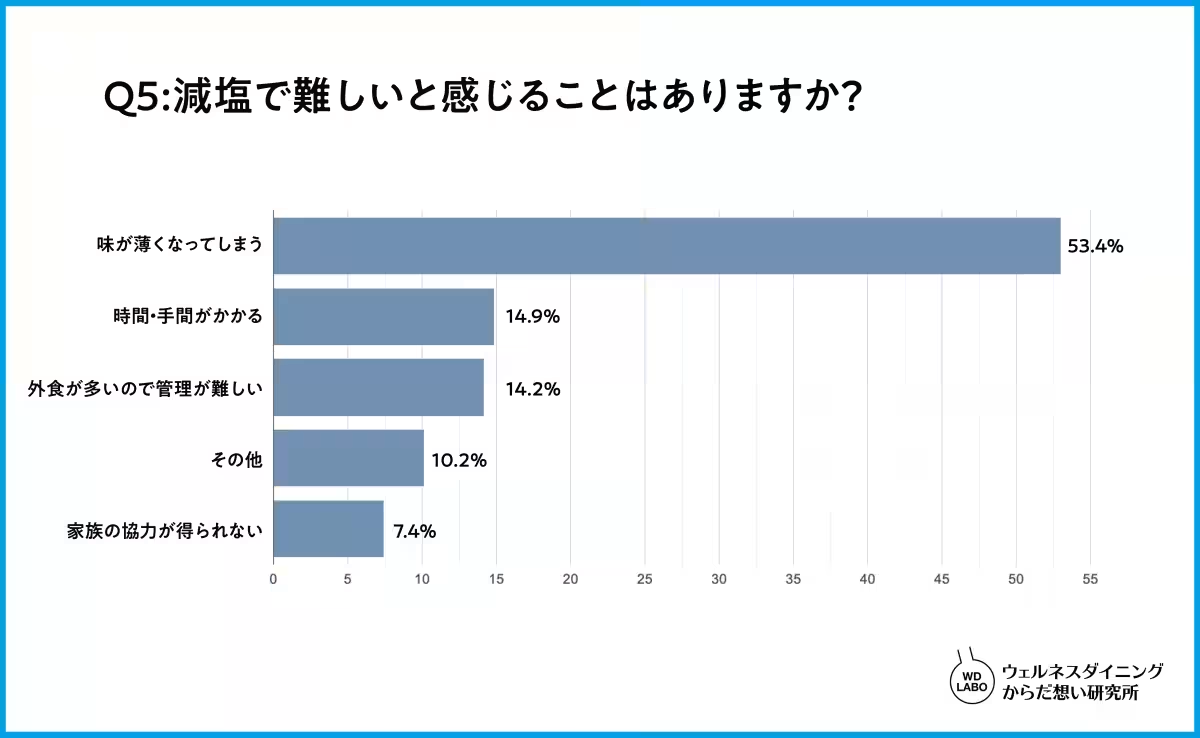

Topics Health)










【About Using Articles】
You can freely use the title and article content by linking to the page where the article is posted.
※ Images cannot be used.
【About Links】
Links are free to use.